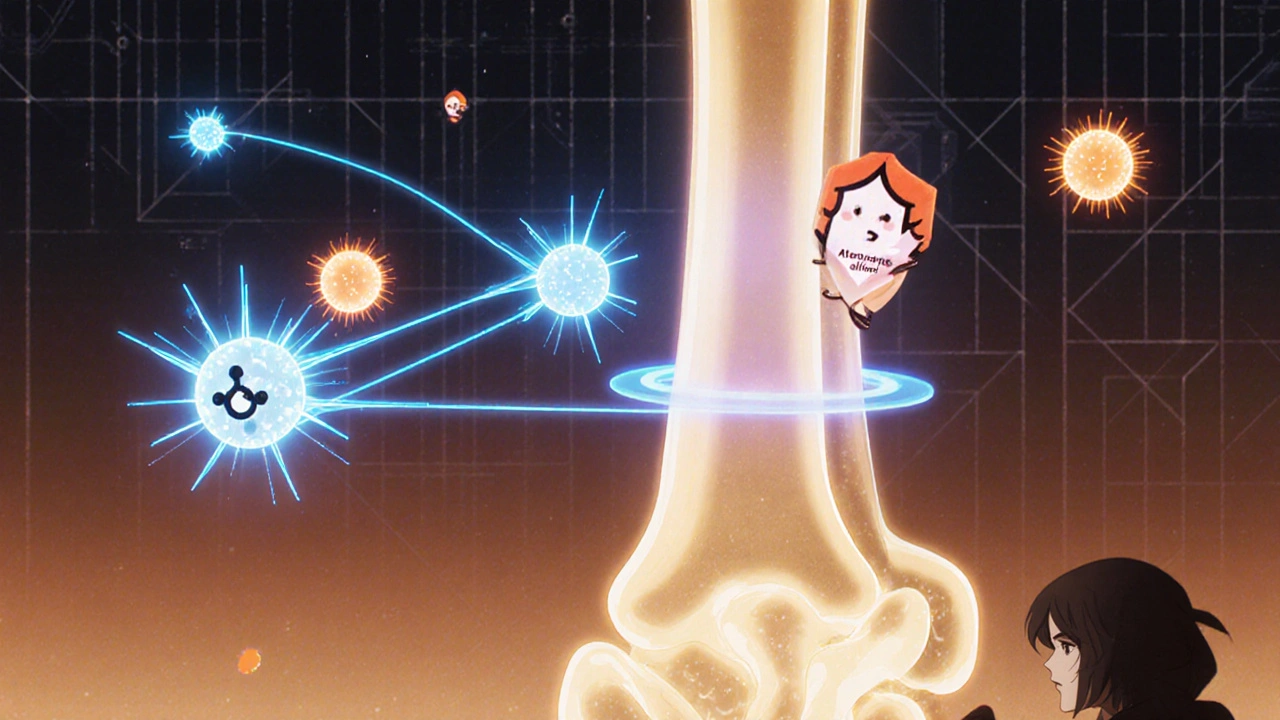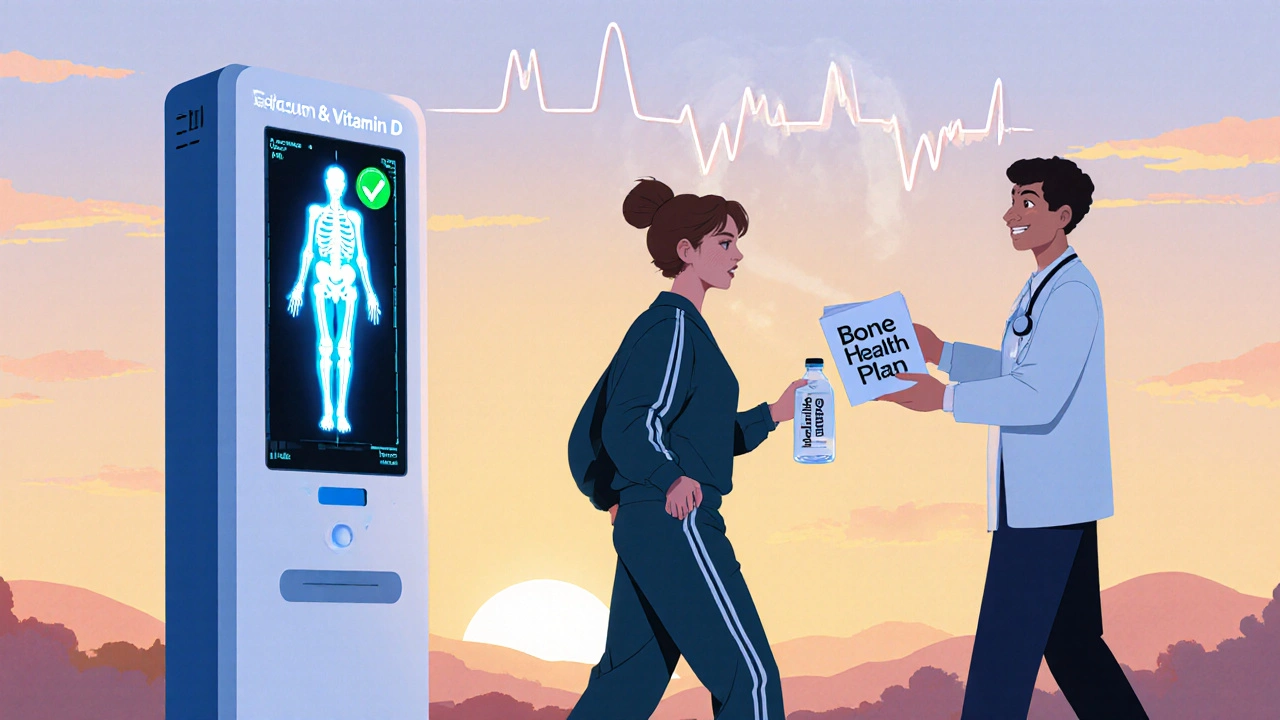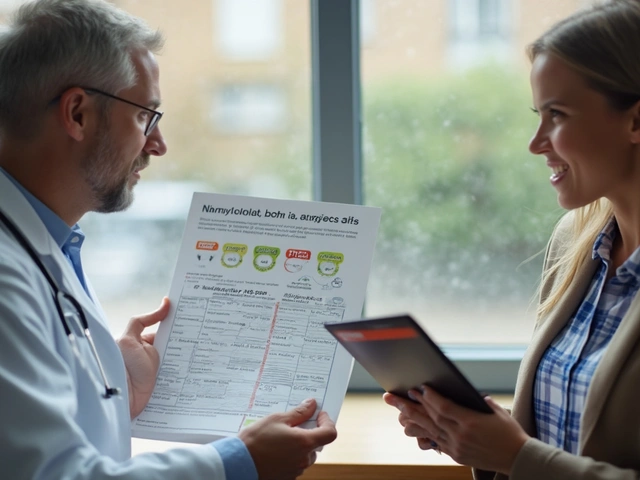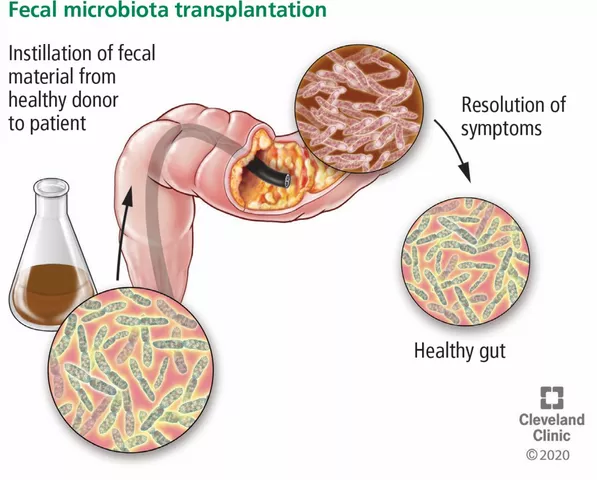Osteoporosis Risk Calculator
Your Risk Assessment
Based on clinical evidence, atenolol use appears to have minimal impact on fracture risk. This tool helps you evaluate your overall osteoporosis risk using factors supported by research.
Your fracture risk assessment based on clinical evidence.
Based on UK Biobank Study (2023) and Framingham Osteoporosis Study (2009)
Quick Takeaways
- Atenolol is a beta‑blocker used mainly for hypertension and heart rhythm issues.
- Osteoporosis is a condition of low bone mineral density (BMD) that raises fracture risk.
- Most large‑scale studies find no strong causal link between atenolol and reduced BMD.
- Some small trials suggest beta‑blockers might modestly improve bone turnover markers.
- Talk to your doctor before stopping atenolol; balance heart benefits against any bone‑health concerns.
What Is Atenolol?
When you hear the name Atenolol is a selective beta‑1 receptor blocker that lowers heart rate and blood pressure. It’s prescribed for conditions such as hypertension, angina, and certain arrhythmias. Because it primarily targets the heart, many patients take it long‑term, often for decades.
Key attributes of atenolol include a short half‑life (about 6‑7 hours), low lipophilicity (so it crosses the blood‑brain barrier less than other beta‑blockers), and dosing that ranges from 25 mg to 100 mg daily. Its safety profile is well‑documented, but like any drug it can interact with other medications and affect organ systems beyond the cardiovascular system.
Understanding Osteoporosis
Osteoporosis is a metabolic bone disease characterized by reduced bone mineral density (BMD) and deterioration of bone micro‑architecture, leading to an increased risk of fractures, especially in the hip, spine, and wrist. The World Health Organization defines osteoporosis by a T‑score ≤ ‑2.5 on dual‑energy X‑ray absorptiometry (DXA) scans. Risk factors include age, female sex, low calcium intake, vitamin D deficiency, sedentary lifestyle, smoking, and certain medications such as glucocorticoids.
In the UK, about 3 million people live with osteoporosis, and fractures cost the National Health Service over £4 billion annually. Early detection and lifestyle modifications are the cornerstone of management, alongside pharmacotherapy like bisphosphonates or denosumab when needed.

How Beta‑Blockers Could Influence Bone Metabolism
The idea that atenolol might impact bone health stems from the role of the sympathetic nervous system (SNS) in bone remodeling. Animal studies show that activation of β‑adrenergic receptors stimulates osteoclast activity (bone resorption) and suppresses osteoblast function (bone formation). Conversely, blocking these receptors could tilt the balance toward bone formation.
Key mechanisms proposed include:
- Reduced catecholamine signaling: Lower norepinephrine levels may decrease osteoclast‑mediated resorption.
- Modulation of RANKL/OPG pathway: Beta‑blockers might lower RANKL (promotes resorption) and raise OPG (inhibits resorption).
- Improved calcium handling: Some studies suggest beta‑blockers enhance calcium reabsorption in the kidneys, indirectly supporting bone mineralization.
However, human data are mixed, and the effect size-if any-appears modest compared with established osteoporosis therapies.
Review of Clinical Evidence
Researchers have tackled the atenolol‑osteoporosis question using several approaches: population‑based cohort studies, randomized controlled trials (RCTs), and meta‑analyses. Below is a concise snapshot of the most cited investigations.
| Study | Population | Duration | Main Findings on BMD / Fracture |
|---|---|---|---|
| Framingham Osteoporosis Study (2009) | 4,500 men & women, avg. age 65 | 10 years | No significant association between beta‑blocker use (including atenolol) and hip BMD. |
| NHANES Analyses (2014) | 2,800 US adults on antihypertensives | Cross‑sectional | Beta‑blocker users had slightly higher lumbar spine BMD (≈1.2 %); not specific to atenolol. |
| Japanese RCT (2017) | 120 post‑menopausal women with osteopenia | 12 months | Atenolol 50 mg daily improved serum osteocalcin by 8 %; BMD unchanged. |
| Cochrane Review (2021) | 12 trials, total 2,300 participants | Varied | Overall low‑quality evidence; no clear reduction in fracture risk. |
| UK Biobank Study (2023) | 500,000 adults, 20 % on beta‑blockers | Median 7 years | Adjusted hazard ratio for major osteoporotic fracture = 0.96 (95 % CI 0.89‑1.04). |
Across these studies, the consensus is that atenolol does not dramatically increase fracture risk, and any bone‑protective effect is minor. The most robust evidence-the UK Biobank analysis-showed a neutral relationship after adjusting for age, sex, BMI, and other meds.
Importantly, many participants were on multiple antihypertensives, making it hard to isolate atenolol’s impact. Also, adherence data are imperfect; some patients discontinue beta‑blockers due to side‑effects, which could bias results.

Practical Guidance for Patients
If you’re taking atenolol and worry about bone health, follow these steps:
- Assess your baseline risk: Age, sex, family history, and lifestyle factors matter more than any single drug.
- Schedule a DXA scan: The NHS offers a one‑time scan for people over 65 or younger with risk factors.
- Optimize calcium and vitamin D: Aim for 1,200 mg calcium and 800-1,000 IU vitamin D daily, unless contraindicated.
- Stay active: Weight‑bearing exercises (walking, resistance training) improve BMD by ~1‑2 % per year.
- Review medications with your GP: If you have a strong personal or family history of fractures, discuss whether a switch to a different antihypertensive (e.g., ACE inhibitor) is appropriate.
- Monitor bone turnover markers: In research settings, serum osteocalcin or CTX can indicate subtle changes, but routine testing isn’t standard practice.
Never stop atenolol abruptly-doing so can trigger rebound hypertension or arrhythmia. Any medication change should be gradual and supervised.
Frequently Asked Questions
Can atenolol cause osteoporosis?
Current evidence does not support a causal link. Large cohort studies show no significant increase in fracture risk among atenolol users.
Do beta‑blockers protect my bones?
Some small trials hint at modest improvements in bone turnover markers, but the effect is far weaker than proven osteoporosis drugs.
Should I get a bone scan because I take atenolol?
Only if you have other risk factors (age > 65, family history, low BMI, etc.). Atenolol alone isn’t a trigger for screening.
What other medications affect bone health?
Glucocorticoids, proton‑pump inhibitors, and some antiepileptics are known to increase fracture risk. In contrast, thiazide diuretics and estrogen‑based therapies may have protective effects.
If I’m worried, can I switch to another blood‑pressure drug?
Discuss alternatives with your GP. ACE inhibitors, ARBs, or calcium‑channel blockers are common substitutes, but each has its own profile. Never change treatment without professional guidance.
The short answer to the headline question is: atenolol osteoporosis link is not strong enough to change clinical practice, but staying proactive about bone health is always wise.








Managing blood pressure with atenolol doesn’t mean you have to ignore bone health. Start by checking your calcium intake, aim for about 1,200 mg a day, and pair it with vitamin D. A simple weight‑bearing routine-like brisk walking for 30 minutes most days-can add a couple of percent to your BMD over a year. If you haven’t had a DXA scan yet and you’re over 65 (or have other risk factors), ask your GP for one; it’s a quick way to get a baseline. Keep a medication list handy and let your doctor know if you experience any new joint pain or fractures so they can reassess your regimen.
When you look at the sympathetic nervous system’s role in bone remodeling, the picture gets surprisingly intricate!!! Beta‑adrenergic signaling ramps up osteoclast activity, and that cascade can, in theory, tip the balance toward bone loss; blocking those receptors with a drug like atenolol could therefore have a protective slant, at least on paper!!! Human studies, however, paint a more nuanced picture: the Framingham cohort found no meaningful dip in hip BMD among beta‑blocker users, and the UK Biobank data showed a hazard ratio that hovered just below one, essentially neutral!!! Small trials, such as the 2017 Japanese RCT, reported modest rises in serum osteocalcin-about eight percent-yet the actual bone density numbers stayed flat, suggesting a biochemical signal that didn’t translate into structural change!!! One hypothesis is that the drug’s short half‑life and low lipophilicity limit its reach into bone‑marrow niches, so any systemic catecholamine dampening is modest at best!!! Moreover, many patients on atenolol are also on diuretics or ACE inhibitors, making it hard to isolate the beta‑blocker’s effect without sophisticated statistical controls!!! The meta‑analysis tucked into the 2021 Cochrane review underscored this uncertainty, flagging low‑quality evidence and warning against over‑interpreting modest biomarker shifts!!! From a practical standpoint, the risk–benefit calculus still heavily favors atenolol for cardiovascular stability, especially when the alternative is uncontrolled hypertension, which itself can aggravate bone loss via renal calcium wasting!!! If you’re particularly worried about fractures, prioritize proven strategies: adequate calcium, vitamin D, resistance training, and, when indicated, osteoporosis‑specific medications!!! In short, the current data suggest that atenolol is, at most, a neutral player in bone health, not a game‑changer!!! Keep your heart medication as prescribed, but stay proactive about the lifestyle pillars that protect bone!!! And remember, any decision to switch antihypertensives should be made jointly with your clinician, weighing heart outcomes against skeletal concerns!!! Future randomized trials that isolate atenolol from other antihypertensives could clarify any subtle bone effects, but until then, clinicians treat it as bone‑neutral!!! Researchers also note that lifestyle factors often dwarf any drug‑induced changes, reinforcing the importance of diet and exercise!!!
Atenolol’s primary action is on the heart, not the skeleton.
While the cardiovascular benefits of atenolol are clear, it’s worth remembering that bone health is a mosaic of genetics, nutrition, and activity; a single medication rarely tips the entire picture.
Got it! 👍🏼
Totally agree, bone health is a team effort – keep moving, keep eating right – and don’t stress the meds too much 😎
Hey there! If you’re juggling atenolol and worries about osteoporosis, it helps to look at the whole picture 😊. First, get a baseline DXA scan if you haven’t already – it’s a quick, low‑radiation test that tells you where you stand. Next, make sure you’re hitting the calcium target (about 1,200 mg daily) and pairing it with vitamin D (800‑1,000 IU), either through diet or a supplement if needed. Adding weight‑bearing exercises like walking, jogging, or light resistance work a few times a week can boost bone density by a small but meaningful amount. If you notice any unexpected aches or a history of fractures in your family, bring it up with your doctor; they might consider a bone‑protective agent in addition to your heart medication. Remember, stopping atenolol abruptly can cause rebound hypertension, so any change should be gradual and supervised. Keep an eye on your overall lifestyle – quitting smoking, limiting alcohol, and staying active are all rock‑solid moves for both heart and bone. And finally, stay in touch with your healthcare team; regular check‑ins help catch any subtle shifts early.
I hear you – juggling meds and bone health can feel overwhelming, but breaking it into small steps makes it manageable; celebrate each healthy habit you keep up, and let your doctor guide any tweaks.